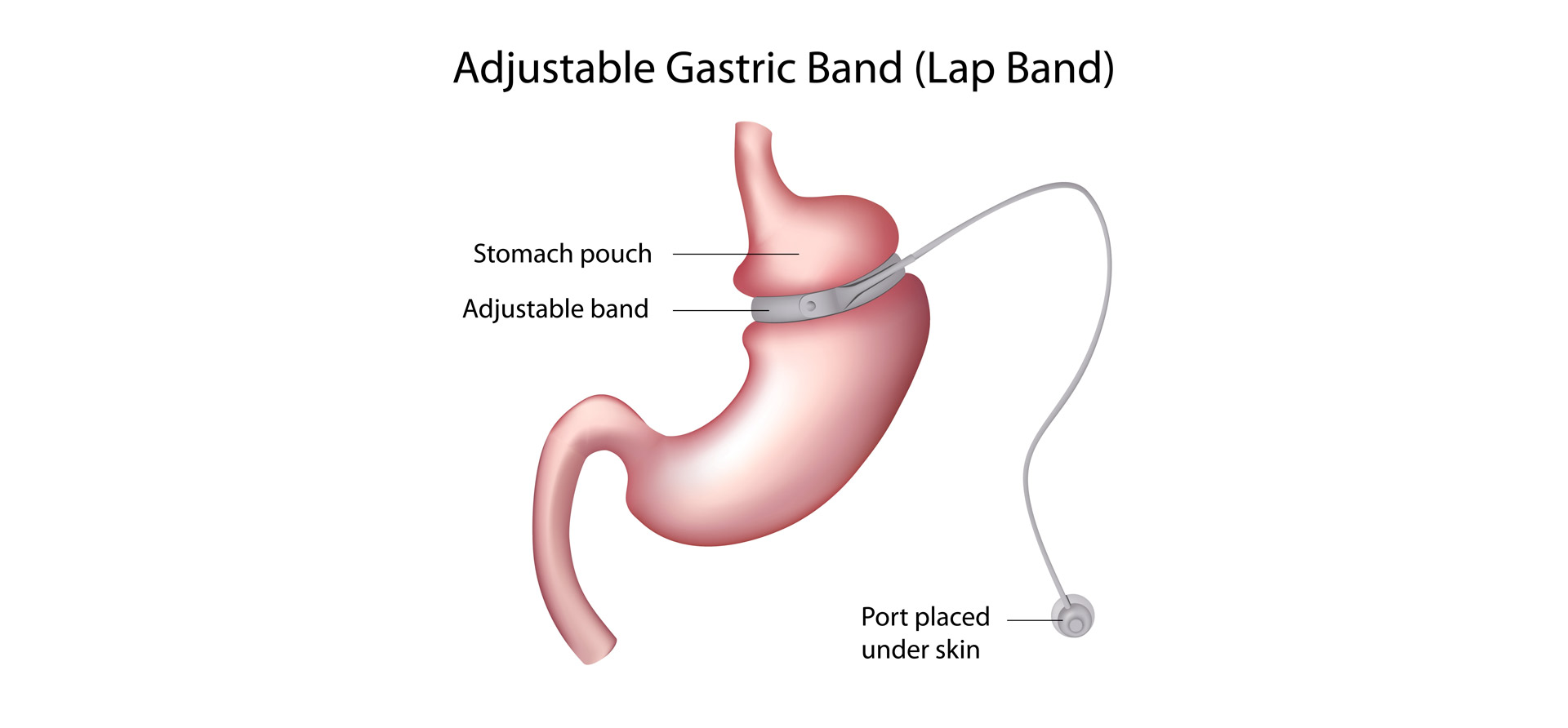WHAT IS LAP BAND?
The LAP-BAND® System, more commonly known as Lap Band surgery, is a weight-loss surgical procedure utilising an adjustable band placed around the top portion of the stomach that works by inducing a feeling of fullness by triggering signals to be sent to the brain.
An individual will feel full on a much smaller amount of food with this type of gastric band in place. The LAP-BAND® helps patients gradually lose excess weight without any stomach cutting or stapling, like some other bariatric surgeries. This makes it a much more desirable surgery in many cases since it is less invasive and has a faster recovery time because there is less trauma inflicted on the body.
This type of procedure has been used in weight loss since 1994 and over 850,000 lap-band procedures have been completed globally to date.

HOW DOES LAP BAND WORK?
The LAP-BAND® System consists of a hollow band, known as a medical prosthesis that is placed around the upper part of the stomach. This is done laparoscopically so it is a minimally invasive procedure. The band applies a constant very gentle pressure (that is adjustable) to the area that triggers feelings of satiety. Nerve endings within the stomach register the pressure as being “full” and communicate this to the brain.
The result is a sensation of feeling satisfied with less food. Less caloric intake with no change in energy output from general day-to-day activities enables one to burn more net calories and lose weight.
The gastric band is attached to an access port – which is surgically placed on a patient’s abdomen – and this is inflated with saline solution. The volume of this solution can be very easily adjusted by your surgeon during a post-surgery consultation. Adjusting this volume will increase or decrease the pressure the band exerts on the stomach. Thus, an increase in pressure through an increase in the volume of saline solution will cause a patient to feel fuller on less food.
In most cases, the LAP-BAND® System is surgically inserted and ‘configured’ using a laparoscopic procedure that is completed under general anaesthesia.
The procedure is performed using long, thin instruments inserted through a few tiny incisions (usually 0.5 – 1.5 cm).
WHO IS LAP BAND FOR?
The LAP-BAND® System is recommended for individuals with a BMI – Body Mass Index – that is greater than 35. Patients with additional complications due to obesity (such as sleep apnoea, type 2 diabetes, and hypertension)can undergo this procedure with a BMI of 30 or greater.
LAP BAND ADVANTAGES
Minimal Trauma
- The least invasive surgical option
- No intestinal re-routing
- No cutting or stapling of the stomach
- Minimal discomfort, hospital length-of-stay and recovery period
- Academic publications with up to 17 years of follow-up
Fewer Risks and Side Effects
- Significantly lower mortality & complication risk than other obesity surgery procedures
- Low risk of nutritional deficiencies compared with other obesity surgery procedures
- No “dumping syndrome” related to dietary intake restrictions, compared to other obesity surgery procedures
- Standard of care for hundreds of practices around the world
Adjustable
- Allows individualised adjustment for long-term weight loss
- Adjustments performed without additional surgery
- The stomach is still allowed to expand naturally to ensure complications regarding pregnancy are kept to a minimum
Reversible
- Removable at any time
- Once the Lap Band is removed, the stomach and surrounding organs typically return to their former dimensions without losing their functionality.
LAP BAND RISKS
While the LAP-BAND System is less invasive than other bariatric procedures and poses fewer risks as a result, it does come with its own set of inherent risks.
Possible complications include:
- Medications used in the surgery carry with them an inherent risk.
- The surgical procedure itself comes with it an inherent risk.
- The patient’s ability to tolerate a ‘foreign object’ implanted in the body.
